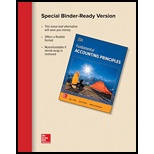
Concept explainers
Direct cost is the cost which can be directly attributed to the production of specific goods or services.
Indirect cost is the cost which cannot be directly attributed to the production of specific goods or services such as administrative expenses.
Product costs are generally direct material, direct labor, direct expenses and factory
Period costs are incurred over a period of time. These are not necessary part of production process. The period cost is reporting as an expense during the accounting period such as interest expenses.
Direct material and direct labor costs are known as Prime cost whereas conversion cost is the cost which is incurred to convert direct material into products.
To determine:
In the question we have given expenses which we have to classify as per below categories:
- Product cost or period cost
If product cost then as direct material, direct labor or factory overheads and then further to be categorized into prime cost or conversion cost
- Further to be classified product cost as direct cost or indirect cost.
Want to see the full answer?
Check out a sample textbook solution
Chapter 18 Solutions
Loose Leaf for Fundamental Accounting Principles
- Diane Fabrics has a magnitude of operating leverage of 2 at a sales level of $320,000. If sales increase by 10%, profits (net income) will increase by____.arrow_forwardThe predetermined overhead rate based units produced us (rounded fo the nearest penny?:arrow_forwardhello, can u give correct answerarrow_forward
- Accurate Answerarrow_forwardwhat is the correct option ? general accounting question pls solve fastarrow_forwardNeptune Manufacturing assigns overhead costs to jobs on the basis of 140% of direct labor costs. The job cost sheet for Job 723 includes $32,600 in direct materials cost and $18,500 in direct labor cost. A total of 2,500 units were produced in Job 723. Required: a. What is the total manufacturing cost assigned to Job 723? b. What is the unit product cost for Job 723?arrow_forward
- On October 1, Year 6, Whitney Company declared a property dividend payable in the form of marketable equity securities classified as "trading" for financial accounting purposes. The marketable equity securities will be distributed to the common stockholders on December 1, Year 6. The investment in equity securities originally cost Whitney $510,000 on August 1, Year 6. The investment's fair value on various dates is as follows: October 1, Year 6 $530,000 December 1, Year 6 535,000 December 31, Year 6 540,000arrow_forwardAn item of equipment owned by Bruno Manufacturing cost $180,000 and had an estimated use of 90,000 hours. During the first 3 years, the equipment was used for 15,000, 19,000, and 12,000 hours. The equipment has an estimated life of 8 years and an estimated salvage value of $30,000. Required: Determine the depreciation for each of the 3 years using the units of production method.arrow_forwardAccountingarrow_forward

 AccountingAccountingISBN:9781337272094Author:WARREN, Carl S., Reeve, James M., Duchac, Jonathan E.Publisher:Cengage Learning,
AccountingAccountingISBN:9781337272094Author:WARREN, Carl S., Reeve, James M., Duchac, Jonathan E.Publisher:Cengage Learning, Accounting Information SystemsAccountingISBN:9781337619202Author:Hall, James A.Publisher:Cengage Learning,
Accounting Information SystemsAccountingISBN:9781337619202Author:Hall, James A.Publisher:Cengage Learning, Horngren's Cost Accounting: A Managerial Emphasis...AccountingISBN:9780134475585Author:Srikant M. Datar, Madhav V. RajanPublisher:PEARSON
Horngren's Cost Accounting: A Managerial Emphasis...AccountingISBN:9780134475585Author:Srikant M. Datar, Madhav V. RajanPublisher:PEARSON Intermediate AccountingAccountingISBN:9781259722660Author:J. David Spiceland, Mark W. Nelson, Wayne M ThomasPublisher:McGraw-Hill Education
Intermediate AccountingAccountingISBN:9781259722660Author:J. David Spiceland, Mark W. Nelson, Wayne M ThomasPublisher:McGraw-Hill Education Financial and Managerial AccountingAccountingISBN:9781259726705Author:John J Wild, Ken W. Shaw, Barbara Chiappetta Fundamental Accounting PrinciplesPublisher:McGraw-Hill Education
Financial and Managerial AccountingAccountingISBN:9781259726705Author:John J Wild, Ken W. Shaw, Barbara Chiappetta Fundamental Accounting PrinciplesPublisher:McGraw-Hill Education





